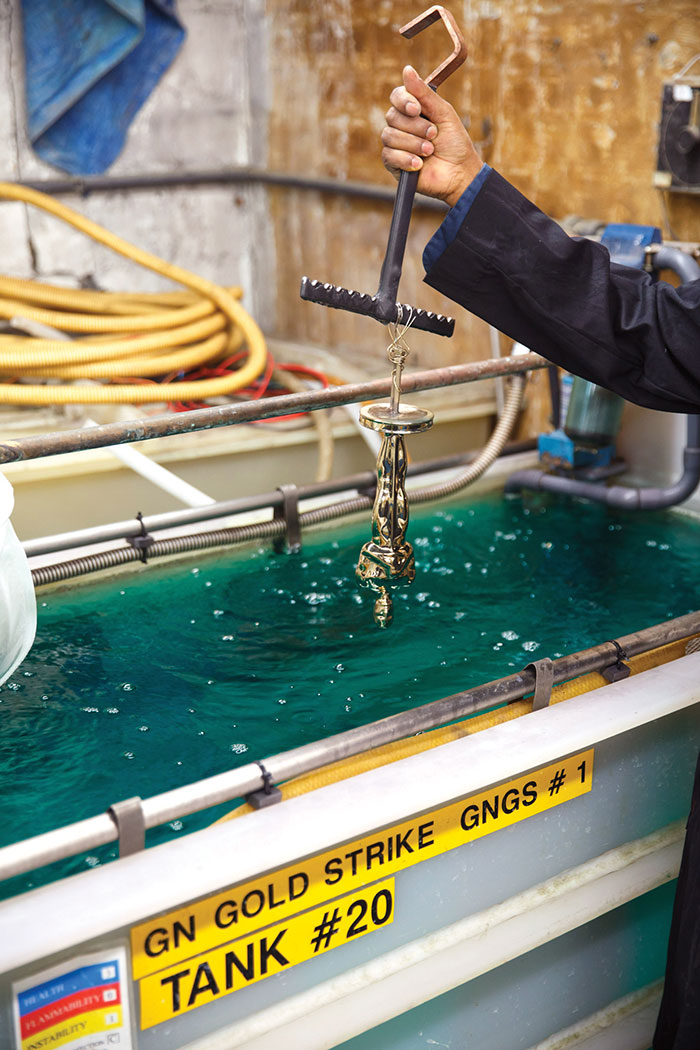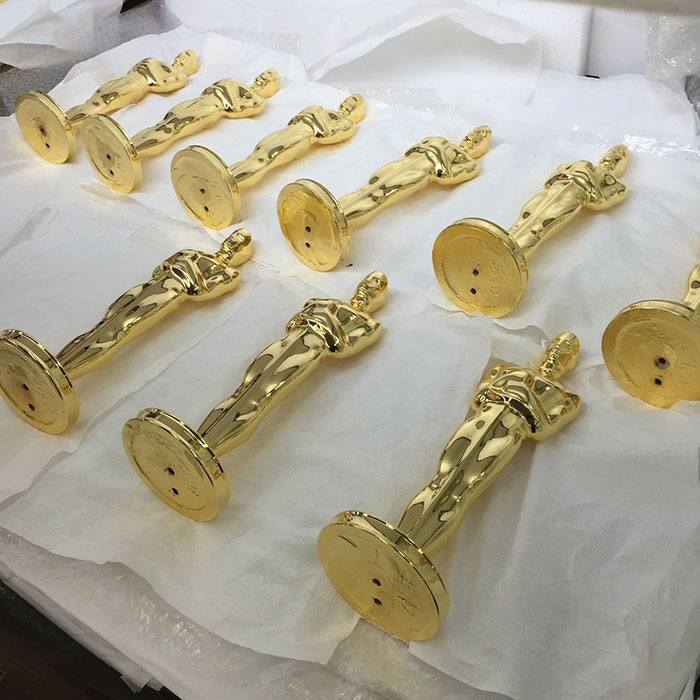This year’s Oscars® coated with same Laser Gold® plating process used in NASA spacecraft.
The original Oscar statuette was sculpted in 1928 by Los Angeles artist George Stanley. The first statuettes were cast in bronze by Guido Nelli at the California Bronze Foundry. For the past 33 years the statuettes have been manufactured at a Chicago trophy company where they were cast in britannia metal and gold plated. The statuette’s base was made of black, nickel-plated spun brass.


In 2015 the Academy sought to return to the original process of lost wax cast bronze for reasons of tradition and quality. They chose Polich Tallix as the place to start anew. While the essence of the sculpture has never changed, over the years small changes had crept in. Of particular importance was the subtle softening of the statuette’s features. After review and much conversation between the Academy and the foundry, it was decided to start by scanning a classic Oscar from 1928 as well as the modern Oscar used in 2015. These two scans were then blended to make the 2016 design closer to George Stanley’s original Art Deco sculpture. The new 2016 Oscar marries the best features of the classic Oscar to the contemporary form of the modern Oscar through 3-D modelling.
This new design was then 3-D printed in wax. A mould of the wax print was made and used to make the modern wax version for each statuette. The waxes are each dipped in a ceramic shell slurry for ten coats. Once the shell is cured, it is fired in an oven at 870° C. Bronze at 1015° C is then poured into the hot ceramic shell and allowed to cool overnight. The next morning, the bronze castings are broken out of the ceramic shell and the plumbing system that guides the metal into the body of the casting is cut off.


The castings are then sanded to a mirror polish finish and electroplated with 24 karat gold. The statuette’s base, also cast in bronze, is given a smooth, black finish. After the presentation, a mirror polished engraved bronze plate with each winner’s name and category is attached in the center of the base.
Epner Technology, founded in 1910, originally developed Laser Gold for Xerox® and later modified the process for NASA Spacecraft. Deposited by electroplating, Laser Gold is a pure 24 kt gold that is also three times harder than ordinary pure gold.


The statuette’s base, also cast in bronze, is given a smooth, black finish. After the presentation, a mirror polished engraved bronze plate with each winner’s name and category is attached in the center of the base.
Production time for 57 statuettes is about three months. The completed gold plated statuette on its base is 343mm tall and weighs about 3.85 kilograms. The foundry is excited to be continuing this highly esteemed, long-established tradition of honoring accomplishment with a cast object created by an artist.


“Polich Tallix has made many of such awards honoring all manners of accomplishment but never before,” says founder Dick Polich, “an object of such renowned and instant recognition.”
Polich Tallix also created statuette nameplates for every Oscar nominee. Two colleagues from Polich Tallix were on hand at the Governors Ball, the Academy’s official post-Oscars celebration, with screwdrivers, affixing nameplates of winners onto the coveted Oscar statuettes.
The Oscar winners are a secret even to Polich Tallix. The artisans engraved 218 nameplates, also in different material than years prior.
